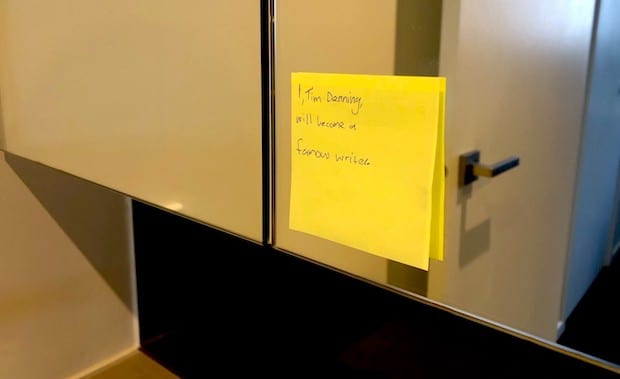Success Advice
The Absolute No No’s Of Social Media: Break These And Everybody Tunes Out.

Everyone talks about what to do on social media. No one talks about the things that don’t work. What not to do is where the recipe for success on social media lies.
I’ve spent the last 12 months getting more engagement on social media than ever so that I can spread more good in the world.
Here is my absolute list of no no’s for social media:
Too much self-promotion.
“Here’s a selfie with the Alibaba founder.”
“Here’s me at blah blah blah exhibition.”
“Here’s me taking a break after working so hard.”
This nonsense doesn’t work. It’s all about you and it comes across as self-promotion. I still want you to share photos of inspirational people you met. I still want you to talk about taking a break and the places you’ve visited. I still want you to share events you attend.
There’s a subtle difference though – share the lessons and value these experiences gave you rather than sharing your ego’s proximity to them.
“Make your social media posts about how you can help and add value rather than putting your name on everything and trying to sound important”
Tagging people without permission.
Ever seen one of those posts where there are twenty names at the bottom that are tagged?
Ever wondered why you’re tagged in someone’s post who you’ve never met?
This careless tagging occurs because the originator wants to reach more people. They think by tagging strangers with lots of followers, they’ll reach more people and get more attention for their ego.
“Tagging without permission is rude and doesn’t work”
I want you to tag people and reach more people. I want you to do it with respect. How?
Reach out and tell the person you’re going to tag them first and why the post is relevant to their audience. Don’t be lazy and tag them because they’ll do nothing and most likely unfollow you. Also, don’t overdo it. Aim to tag three people or so instead of twenty. Less is more.
Linking out.
If I only teach you one thing it’s this: Don’t link out.
In plain English, this means that you should avoid posting a link that takes people off the social media platform they are viewing your post on. For example, if you’re on Facebook, don’t put a link in your post that takes me to YouTube.
Always post natively.
In plain English again, post your content directly on the platform. Instead of linking to YouTube, upload the video to Facebook directly.
Scheduling doesn’t work as well. It’s all about live.
We’ve all used software like Buffer to schedule posts and make people think that we are content machines that write something new every 2.5 hours and then upload it at peak times of the day.
The algorithm that runs a lot of these social media platforms and decides who see’s your content has figured out the game. Live, original content that is unplanned will always get priority. Try doing things on the fly. Upload your content in real time. Better yet, create your content in real time.
Polished is getting old.
Joel Brown taught me this lesson. One day, he was getting ready to shoot a video in the park. He was going to get a haircut beforehand, so he looked good for the camera. Laziness took over and he decided to shoot the video on his iPhone, with messy bed hair.
This video got lots of engagement because he shot it in a moment of passion and it was unpolished.
We’ve all seen the polished YouTube videos with perfectly positioned product placement, special lighting and high definition cameras. All of this pre-preparation kills the idea and the creativity that is attached to it.
Try being raw.
Try being authentic.
Try keeping it simple.
Try to avoid the temptation of becoming a gear/technology junkie.
Be original (thoughts on resharing).
I get people I work with all the time saying “How do you get so many people to engage with your posts?” I then click their social media profiles and look at their own posts. Every one of them is a reshare of someone else’s content.
At least 70% of the posts you put up should be original. Just resharing someone else’s stuff is boring. Create original pieces. When you reshare, put some detail around why you liked the content and how it helped you. Make your resharing personal.
You can’t just regurgitate other people’s content and then expect to get noticed.
Don’t post the same piece on every social platform.
Every social platform has a different voice and different functionality. Creating one piece of content and then sharing it on every social platform doesn’t work.
For starters, focus your attention on one or two platforms. Go deep on a few social channels rather than going wide and posting on many.
The time of day.
Consider the time of day when you post but don’t be obsessed with it. Good content will get people sharing it regardless of when it’s posted. Great is great and the time of the day won’t change that.
With that said, early shares of your posts is important for gaining traction and getting the social platforms algorithm to let you be seen by more people. Consider avoiding times like Sunday nights when people are having family dinners and not on social media.
What you’re forgetting is what not to do.
So to wrap all this up, it’s what you don’t do on social media that will elevate your success to the next level. Breaking this list of no no’s will see the social media platforms you’re posting to limit your audience. Play by these rules, and you’ll have more engagement than you can poke a stick at it.
Use this engagement to do good in the world.
PS.
I don’t shoot videos of me driving in a Lamborghini or taking selfies with Oprah. I’m just a humble guy from Australia who’s living the dream, working hard and trying to inspire all of you to do big things, and use social media to elevate your message.
If you want to increase your productivity and learn some more valuable life hacks, then join my private mailing list on timdenning.net
Did You Know
How Skilled Migrants Are Building Successful Careers After Moving Countries
Behind every successful skilled migrant career is a mix of resilience, strategy, and navigating systems built for locals.

Moving to a new country for work is exciting, but it can also be unnerving. Skilled migrants leave behind familiar systems, networks, and support to pursue better job opportunities and a better future for their families. (more…)
Life
10 Research-Backed Steps to Create Real Change This New Year
This New Year could finally be the one where you break old patterns and create real, lasting change.

Every New Year, we make plans and set goals, but often repeat old patterns. (more…)
Change Your Mindset
The Silent Skill That Makes People Respect You Instantly
What truly earns respect and why most people go about it the wrong way

Everybody craves respect but not everyone earns it. Some people believe that a title, years of experience, or a position of authority automatically entitles them to respect. (more…)
Entrepreneurs
The Essential Skills Every Entrepreneur Needs In 2026
Success in the digital age isn’t about luck. It’s about mastering the skills that separate dreamers from doers.

When I was 22 years old, I started my first side hustle as a ghostwriter. (more…)
-

 Shift Your Mindset4 weeks ago
Shift Your Mindset4 weeks ago11 E’s That Define Every Great Leader And Why Most People Miss Them
-

 Did You Know4 weeks ago
Did You Know4 weeks agoThe Success Patterns You Inherited (And Didn’t Notice)
-

 Entrepreneurs3 weeks ago
Entrepreneurs3 weeks agoThe Essential Skills Every Entrepreneur Needs In 2026
-

 Business4 weeks ago
Business4 weeks agoThe Hidden Money Pit in Your Operations (and How to Use It)
-

 Change Your Mindset2 weeks ago
Change Your Mindset2 weeks agoHow to Turn Your Mind Into Your Greatest Asset (Instead of Your Enemy)
-

 Change Your Mindset2 weeks ago
Change Your Mindset2 weeks agoThe Silent Skill That Makes People Respect You Instantly
-

 Life2 weeks ago
Life2 weeks ago10 Research-Backed Steps to Create Real Change This New Year
-

 Tech1 week ago
Tech1 week agoWhat’s in a Name? How to Get Your Domain Right




















1 Comment